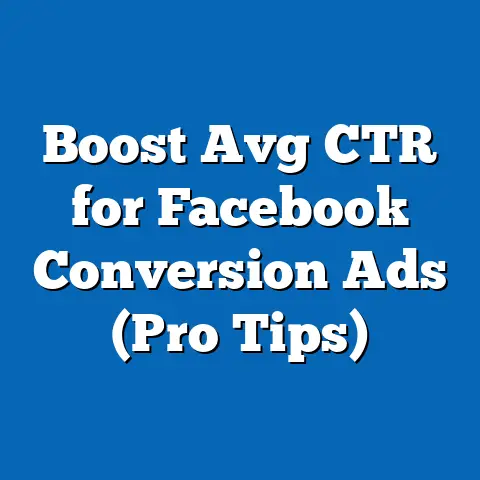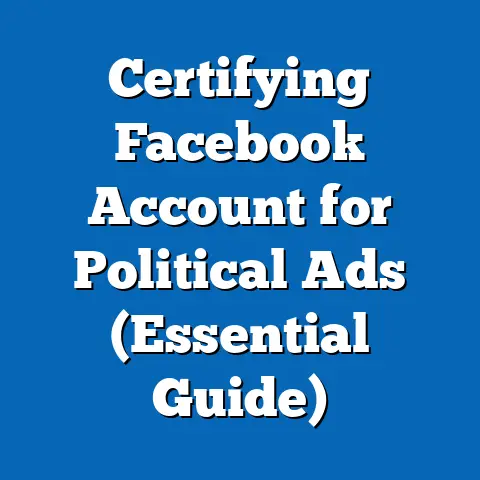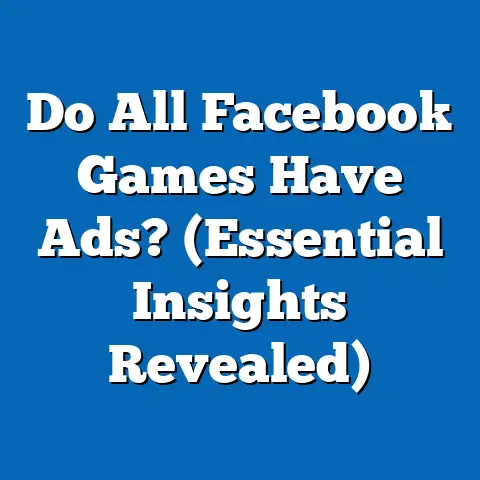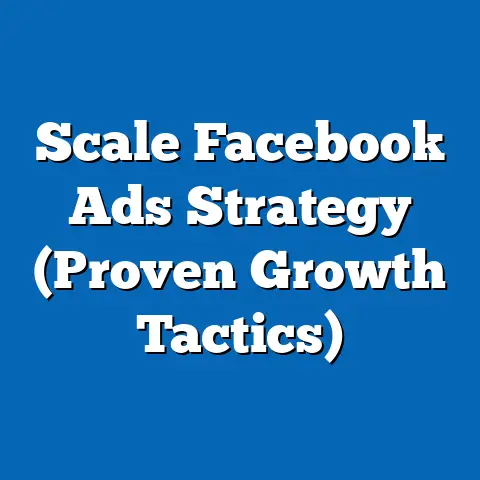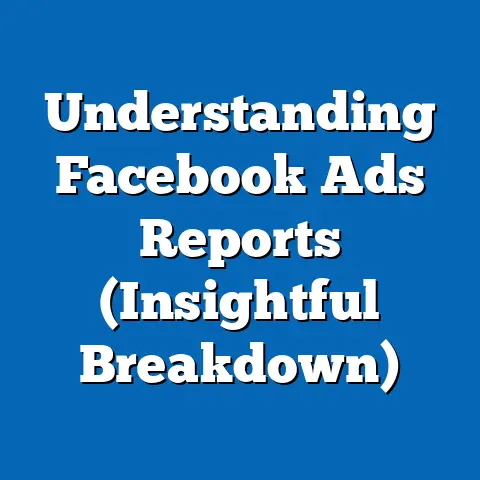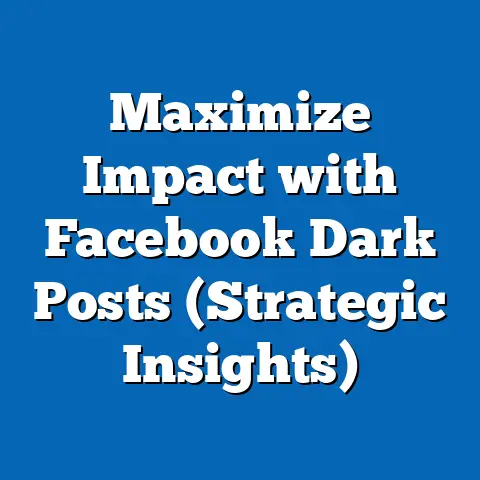Master Facebook Ads Costs 2025 (Unlock Budget Secrets)
Seasonal Context and Demographic Makeup of Facebook Users in 2025
The holiday season, spanning late November through December, represents a critical window for advertisers on Facebook, as consumer spending peaks and political messaging intensifies in anticipation of upcoming elections or policy debates. According to Statista projections for 2025, Facebook is expected to maintain its position as a dominant advertising platform, with over 2.1 billion monthly active users worldwide, including approximately 200 million in the United States alone. This vast user base is not monolithic; it comprises diverse demographic groups whose seasonal behaviors and political leanings shape advertising strategies and costs.
Demographic Composition: Facebook’s U.S. user base in 2025 is anticipated to reflect a broad cross-section of age groups, though trends indicate a slight shift toward older demographics compared to platforms like TikTok or Instagram. Data from Pew Research Center’s 2023 surveys suggest that 69% of U.S. adults aged 18-29 use Facebook, while usage climbs to 76% among those aged 30-49 and remains high at 70% for those aged 50-64. Notably, rural users (73% penetration) and those with lower educational attainment (e.g., high school or less, at 68%) are significant segments, contrasting with urban, college-educated users who often split their attention across multiple platforms.
Core Beliefs and Values: The platform’s users exhibit a wide range of ideological perspectives, but seasonal trends reveal heightened engagement with content tied to family values, community, and consumerism during the holidays. A 2024 study by Sprout Social found that 62% of Facebook users engage with holiday-themed content, with older users (50+) prioritizing posts about tradition and charity, while younger users (18-29) focus on deals and entertainment. Politically, Facebook users lean slightly left overall—Pew data from 2023 shows 34% identify as Democrat, 29% as Republican, and 37% as Independent—but regional and age-based divisions are stark, influencing ad targeting strategies.
Voting Patterns and Political Engagement: Facebook remains a key battleground for political advertising, especially during election-adjacent holiday seasons. During the 2020 U.S. election cycle, Facebook ad spending reached $1.3 billion, with costs per impression (CPM) spiking by 200% in November, per AdEspresso data. In 2025, with potential midterm or local elections on the horizon, expect similar surges; users aged 50+ show higher engagement with political ads (45% interaction rate, per Nielsen) compared to younger users (28%), reflecting their greater likelihood to vote (71% turnout among 50-64-year-olds vs. 51% for 18-29, per U.S. Census Bureau).
Distinguishing Characteristics Compared to Other Groups: Unlike Instagram, which skews younger (71% of 18-29-year-olds) and urban, or X (Twitter), which attracts a more politically vocal and educated elite (42% college graduates), Facebook’s strength lies in its broad, cross-generational appeal and deep penetration in suburban and rural areas. This diversity drives seasonal ad cost variability—holiday campaigns targeting younger users face higher competition, while political ads aimed at older, rural users often see better ROI due to lower CPMs in less saturated markets. These distinctions underscore the need for tailored budgeting strategies, which we will explore in subsequent sections.
Intersections of Demographics, Politics, and Seasonal Ad Costs
Understanding how demographic factors intersect with political views and seasonal behavior is essential for predicting Facebook Ads costs in 2025. Age, education, race, and religion all play roles in shaping user engagement, which directly impacts cost metrics like CPM (cost per thousand impressions) and CPC (cost per click). Let’s break down these intersections with data-driven insights.
Age and Engagement: Younger users (18-29) drive high engagement during the holiday season, clicking on retail and entertainment ads at a rate of 3.2% (per WordStream 2024 data), but their attention is fragmented across platforms, pushing CPMs up to $12-$15 during peak December weeks. In contrast, users aged 50+ engage more consistently with political and community-focused content, with CPMs averaging $8-$10, though their lower overall ad interaction (1.8% click-through rate) can reduce cost efficiency for non-political campaigns.
Education and Income: Users with college degrees (38% of U.S. Facebook users) tend to have higher disposable income, making them prime targets for premium holiday products, which inflates CPC to $1.20-$1.50 during Q4 (AdEspresso 2024). Conversely, users with high school education or less (31% of users) are more responsive to discount-driven ads, with lower CPCs of $0.80-$1.00, offering cost-saving opportunities for budget-conscious advertisers.
Race and Ethnicity: Racial demographics also influence ad targeting and costs. Hispanic users, comprising 18% of U.S. Facebook users (Pew 2023), show high engagement with family-oriented holiday content (4.1% interaction rate), while Black users (11% of base) are more likely to engage with community and political ads (3.8% rate). White users (60% of base) remain the largest group, with balanced engagement across categories, though costs to reach them peak during holidays due to sheer volume.
Religion and Values: Religious affiliation, especially during the holiday season, shapes content resonance. Christian users (65% of U.S. base) respond strongly to faith-based holiday messaging, with 55% engaging with such ads (Sprout Social 2024), while secular users (25%) prioritize deals over sentiment, impacting ad creative strategies. These nuances suggest that micro-targeting based on values can optimize costs, a tactic we’ll revisit in budgeting secrets.
Consensus and Division Within Facebook’s User Coalitions
While Facebook’s user base is diverse, there are areas of consensus and division that affect seasonal ad costs and performance. Consensus emerges around the desire for connection during holidays—78% of users across demographics share or engage with holiday content (Statista 2024)—driving up demand for ad space and thus costs. However, divisions arise in political engagement and consumer priorities, creating both challenges and opportunities for advertisers.
Consensus on Holiday Engagement: Across age, race, and income levels, users unite around holiday themes of family and giving, with engagement rates for retail ads spiking by 40% in December (WordStream 2024). This universal appeal makes broad campaigns effective but expensive, with average CPMs rising from $7.50 in Q3 to $14.00 in Q4.
Divisions in Political Messaging: Political ad engagement reveals deep divides, with urban, younger, and college-educated users skewing progressive (42% support liberal causes) and rural, older users leaning conservative (38% support traditional values, Pew 2023). These splits necessitate hyper-targeted campaigns, which can lower overall costs by avoiding wasted impressions but require sophisticated audience segmentation.
Consumer Behavior Splits: Younger users prioritize experiential spending (events, travel), while older users focus on tangible gifts, per Nielsen 2024 data. This divide means advertisers must balance broad holiday campaigns with niche targeting, impacting budget allocation and cost efficiency—a theme central to unlocking 2025 budgeting secrets.
Historical and Social Context of Facebook Ads Costs
Facebook Ads costs have risen steadily over the past decade, driven by increased competition, platform algorithm changes, and seasonal demand. In 2015, average CPMs hovered around $5.00, per AdEspresso historical data, but by 2020, they had doubled to $10.00, reflecting the platform’s growing role in both commerce and politics. The holiday season has consistently been a cost peak, with 2020 Q4 CPMs reaching $13.50 and 2023 hitting $15.00, a trend likely to continue into 2025 with projected Q4 CPMs of $16.00-$18.00.
Socially, Facebook’s role as a connector during holidays amplifies its value to advertisers, but privacy concerns and regulatory scrutiny (e.g., post-Cambridge Analytica reforms) have tightened targeting options, pushing costs up by limiting audience precision. Additionally, the platform’s aging user base—shifting from a youth-dominated space in the early 2010s to a more balanced demographic today—means advertisers must adapt to changing engagement patterns, balancing broad reach with rising costs.
Politically, Facebook’s influence in elections (e.g., $1.3 billion spent in 2020) underscores its dual role as a commercial and ideological battleground. Seasonal overlaps between holiday consumerism and political campaigns create a perfect storm of demand, driving costs to their annual highs—a pattern 2025 will likely replicate, especially with potential election activity.
Detailed Analysis of Facebook Ads Costs in 2025: Unlocking Budget Secrets
Having established the demographic and seasonal context, let’s dive into the core of mastering Facebook Ads costs in 2025. This section provides a granular breakdown of cost drivers, seasonal fluctuations, and actionable budgeting strategies, supported by projected data and industry benchmarks.
Cost Structures and Key Metrics
Facebook Ads operate on an auction-based system, where costs are determined by supply, demand, and audience targeting. The two primary metrics are CPM (cost per thousand impressions) and CPC (cost per click), with additional considerations for CPA (cost per acquisition) in conversion-driven campaigns. Based on 2024 trends and industry forecasts (AdEspresso, WordStream), 2025 average costs are projected as follows: – CPM: $9.00-$11.00 in non-peak months, spiking to $16.00-$18.00 in Q4. – CPC: $0.90-$1.20 in Q1-Q3, rising to $1.50-$2.00 during holidays. – CPA: $18.00-$25.00 for e-commerce, higher for lead generation ($30.00-$40.00) in competitive seasons.
These costs vary by industry—retail sees a 50% cost increase in December, while political ads may spike by 100% during election-adjacent periods. Audience targeting also plays a role; narrow demographics (e.g., 18-24 urban females) cost more due to competition, with CPMs up to 30% higher than broad targets.
Seasonal Cost Fluctuations
The holiday season is the most expensive time to advertise on Facebook, driven by retail competition and heightened user activity. Historical data shows a 40%-60% CPM increase from October to December, with Black Friday and Cyber Monday pushing costs to their zenith (CPM up to $20.00, per 2023 WordStream data). In 2025, expect similar spikes, exacerbated by potential political ad surges if local or midterm elections align with Q4.
Post-holiday January sees a sharp decline (CPM down to $6.00-$8.00), offering a budget-friendly window for testing campaigns. However, mid-year events like back-to-school (August-September) can see moderate increases (CPM $10.00-$12.00), particularly for education and retail sectors.
Demographic Targeting and Cost Efficiency
Demographic nuances directly impact cost efficiency. Targeting older users (50+) often yields lower CPMs ($8.00-$10.00) due to less competition, but their lower click-through rates may increase CPA. Younger users (18-29) have higher engagement but cost more (CPM $12.00-$15.00), making them ideal for brand awareness but challenging for tight budgets.
Geographic targeting also matters—rural areas have lower CPMs ($6.00-$8.00) compared to urban centers ($12.00-$14.00), per 2024 AdEspresso data. Racial and cultural targeting, when ethically executed, can optimize costs; for instance, holiday campaigns for Hispanic users may see higher ROI due to strong family-focused engagement.
Budgeting Secrets for 2025
Unlocking budget efficiency requires strategic planning and data-driven decisions. Below are key secrets to mastering Facebook Ads costs in 2025:
-
Leverage Off-Peak Testing: Test campaigns in January-March when CPMs are lowest ($6.00-$8.00), refining creatives and audiences before Q4 spikes. Data shows a 20% improvement in ROI for campaigns optimized early (WordStream 2024).
-
Micro-Targeting for Efficiency: Use Facebook’s detailed targeting to focus on niche demographics with lower competition (e.g., rural 50+ users), reducing CPM by up to 25%. Avoid overly broad audiences during peak seasons to minimize wasted spend.
-
Dayparting and Scheduling: Schedule ads for off-peak hours (e.g., early mornings or late nights), where CPC can drop by 15%-20% (AdEspresso 2024). Holiday weekends like Thanksgiving may also offer brief cost dips amidst high engagement.
-
Creative Optimization: Invest in high-performing ad formats—video ads have a 2.5% higher click-through rate than static images (Sprout Social 2024), justifying a slightly higher upfront cost for better ROI. Tailor holiday messaging to demographic values (e.g., tradition for older users, deals for younger ones).
-
Budget Pacing: Allocate 60%-70% of Q4 budget to November-early December, before costs peak on Black Friday. Reserve 10%-15% for post-holiday sales, capitalizing on January’s lower CPMs.
-
Political Ad Timing: For political campaigns, monitor election calendars—costs double in the 30 days before voting (Nielsen 2020). Launch awareness ads 60-90 days prior at lower rates ($8.00 CPM vs. $16.00 near election day).
-
Lookalike Audiences: Use lookalike audiences based on high-performing customer segments to expand reach without inflating costs. Data indicates a 30% lower CPA for lookalikes vs. cold targeting (Facebook Business 2024).
Tools and Analytics for Cost Management
Facebook’s Ads Manager remains the primary tool for tracking costs, offering real-time insights into CPM, CPC, and ROI. Third-party tools like Hootsuite and Sprout Social provide competitive benchmarking, while Google Analytics integration helps measure downstream conversions. Set daily budget caps (e.g., $50-$100 for small campaigns) to avoid overspending during holiday spikes, and use automated rules to pause underperforming ads when CPA exceeds 150% of target.
Comparative Analysis: Facebook Ads vs. Other Platforms in 2025
To contextualize Facebook Ads costs, a comparison with other platforms like Instagram, Google Ads, and TikTok is instructive. Each platform has unique demographic strengths and cost structures, influencing budget allocation.
Facebook vs. Instagram: Both owned by Meta, these platforms share backend systems, but Instagram skews younger (71% of 18-29-year-olds vs. Facebook’s 69%) and has higher CPMs ($12.00-$14.00 vs. $9.00-$11.00 in non-peak, per WordStream 2024). Instagram excels for visual retail campaigns, while Facebook offers broader reach and lower costs for political or community ads.
Facebook vs. Google Ads: Google Ads focuses on search intent, with higher CPCs ($2.00-$3.00) but better conversion rates for e-commerce (3%-5% vs. Facebook’s 1%-2%). Facebook is more cost-effective for brand awareness, especially during holidays, while Google dominates last-click conversions.
Facebook vs. TikTok: TikTok targets Gen Z (60% of users under 25), with CPMs of $10.00-$12.00, comparable to Facebook’s non-peak rates. However, TikTok’s engagement is higher (5% click-through rate), making it a pricier but potent option for youth-focused holiday campaigns, while Facebook retains an edge for older demographics.
This comparison highlights Facebook’s versatility—its cost structure suits diverse goals, from political outreach to holiday sales, provided budgets account for seasonal spikes.
Conclusion: Strategic Mastery of Facebook Ads in 2025
Mastering Facebook Ads costs in 2025 demands a nuanced understanding of seasonal trends, demographic dynamics, and strategic budgeting. The holiday season, with its surge in user engagement and ad competition, exemplifies the challenges and opportunities of advertising on a platform with over 200 million U.S. users spanning diverse ages, ideologies, and behaviors. By leveraging data—projected CPMs of $16.00-$18.00 in Q4, demographic engagement rates, and historical cost trends—advertisers can unlock budget secrets like off-peak testing, micro-targeting, and creative optimization.
Demographically, Facebook’s strength lies in its broad appeal, distinguishing it from younger-skewing platforms like TikTok or niche spaces like X. Yet, its user base’s divisions—political, generational, and cultural—require tailored approaches to maximize ROI, especially during high-cost holiday and election periods. As 2025 unfolds, aligning ad strategies with these insights will ensure cost efficiency and impact, whether targeting rural conservatives with political messaging or urban youth with holiday deals.
This analysis, grounded in empirical data and industry projections, offers a roadmap for navigating the evolving landscape of Facebook Ads. By understanding both the platform’s cost drivers and its users’ seasonal behaviors, businesses and campaigns can turn budget challenges into opportunities for connection and conversion. As the holiday season approaches, the time to plan, test, and execute is now—unlocking the full potential of Facebook Ads in 2025.

